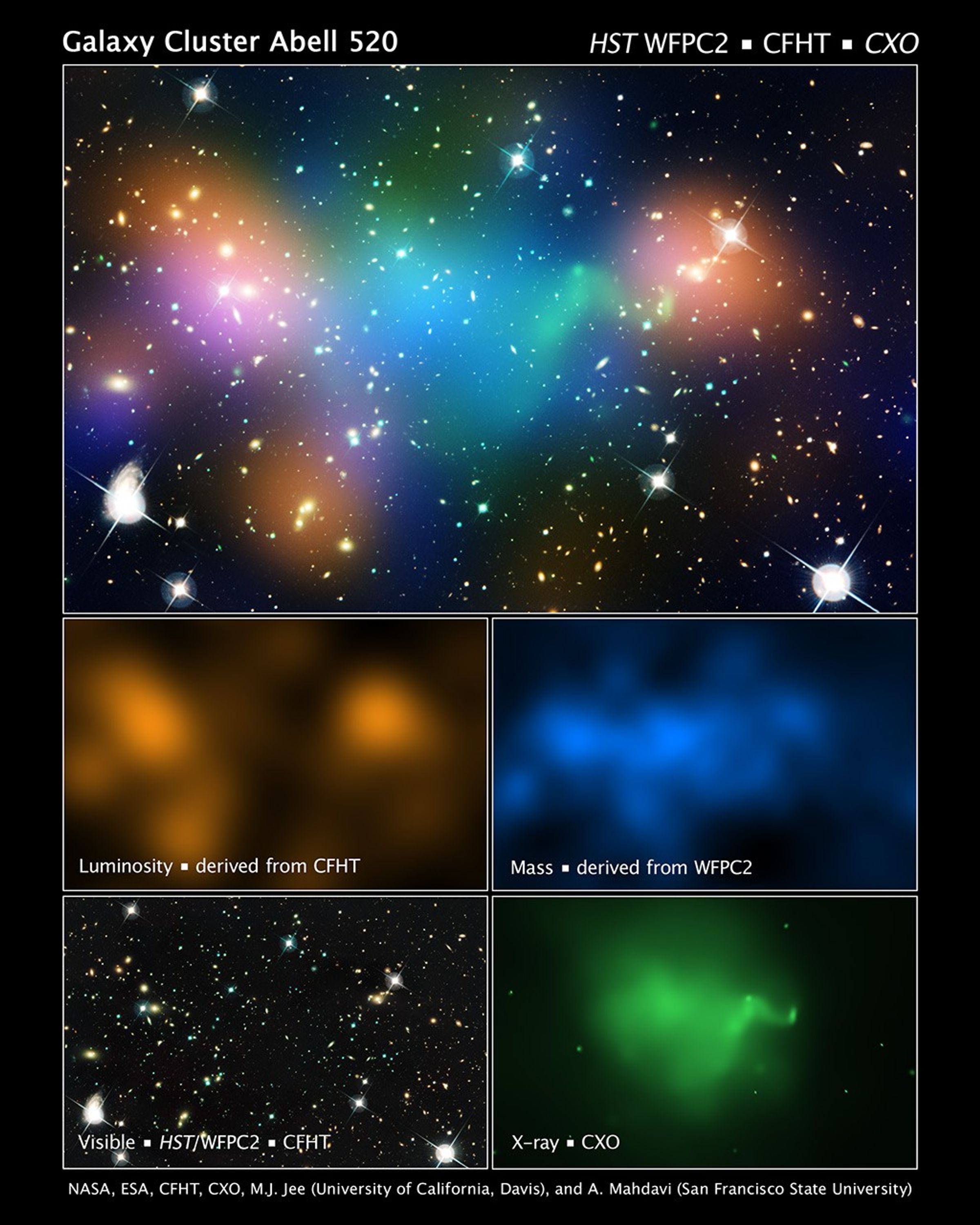1 min read
Galaxy Cluster Abell 520’s Hot Gas (Chandra)

This image shows regions of hot gas at the core of merging galaxy cluster Abell 520, detected by NASA's Chandra X-ray Observatory. The gas is evidence that a collision between massive galaxy clusters took place.
Abell 520 resides 2.4 billion light-years away.
About the Object
- R.A. PositionR.A. PositionRight ascension – analogous to longitude – is one component of an object's position.04h 54m 18.98s
- Dec. PositionDec. PositionDeclination – analogous to latitude – is one component of an object's position.02° 56' 48.8"
- ConstellationConstellationOne of 88 recognized regions of the celestial sphere in which the object appears.Orion
- DistanceDistanceThe physical distance from Earth to the astronomical object. Distances within our solar system are usually measured in Astronomical Units (AU). Distances between stars are usually measured in light-years. Interstellar distances can also be measured in parsecs.2.4 billion light-years (740 million parsecs)
About the Data
- InstrumentInstrumentThe science instrument used to produce the data.Chandra
- FiltersFiltersThe camera filters that were used in the science observations.CXO X-ray
- Object NameObject NameA name or catalog number that astronomers use to identify an astronomical object.Abell 520
- Object DescriptionObject DescriptionThe type of astronomical object.Merging Galaxy Cluster
- Release DateMarch 2, 2012
- Science ReleaseDark Matter Core Defies Explanation in Hubble Image
- Credit

Green: CXO X-ray
Related Images & Videos

Merging Galaxy Cluster Abell 520
This composite image shows the distribution of dark matter, galaxies, and hot gas in the core of the merging galaxy cluster Abell 520, formed from a violent collision of massive galaxy clusters. The natural-color image of the galaxies was taken with NASA's Hubble Space Telescope...

Galaxy Cluster Abell 520 (with CFHT, HST, CFHT/HST, and CXO Overlays)
This composite image shows the distribution of dark matter, galaxies, and hot gas in the core of the merging galaxy cluster Abell 520, formed from a violent collision of massive galaxy clusters. The natural-color image of the galaxies was taken with NASA's Hubble Space Telescope...

Galaxy Cluster Abell 520 (HST-CFHT-CXO Composite)
This composite image shows the distribution of dark matter, galaxies, and hot gas in the core of the merging galaxy cluster Abell 520, formed from a violent collision of massive galaxy clusters. The natural-color image of the galaxies was taken with NASA's Hubble Space Telescope...

Galaxy Cluster Abell 520's Mass (HST WFPC2)
This image shows the location of most of the mass in merging galaxy cluster Abell 520's core, which is dominated by dark matter. Dark matter is an invisible substance that makes up most of the universe's mass. The dark-matter map was derived from Hubble Wide Field Planetary...
Share
Details
Claire Andreoli
NASA’s Goddard Space Flight Center
Greenbelt, Maryland
claire.andreoli@nasa.gov































